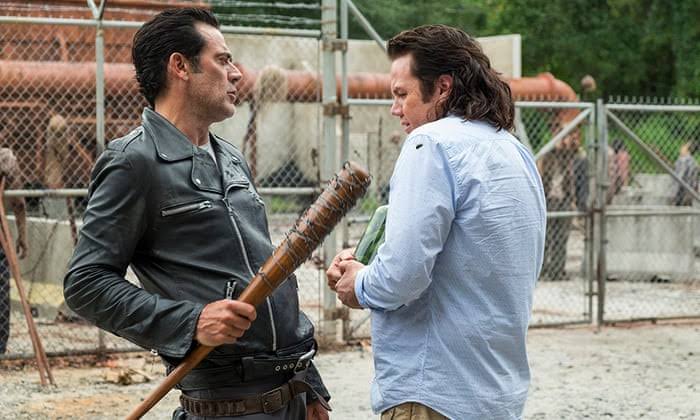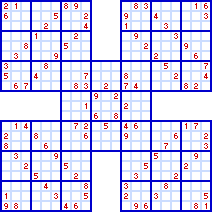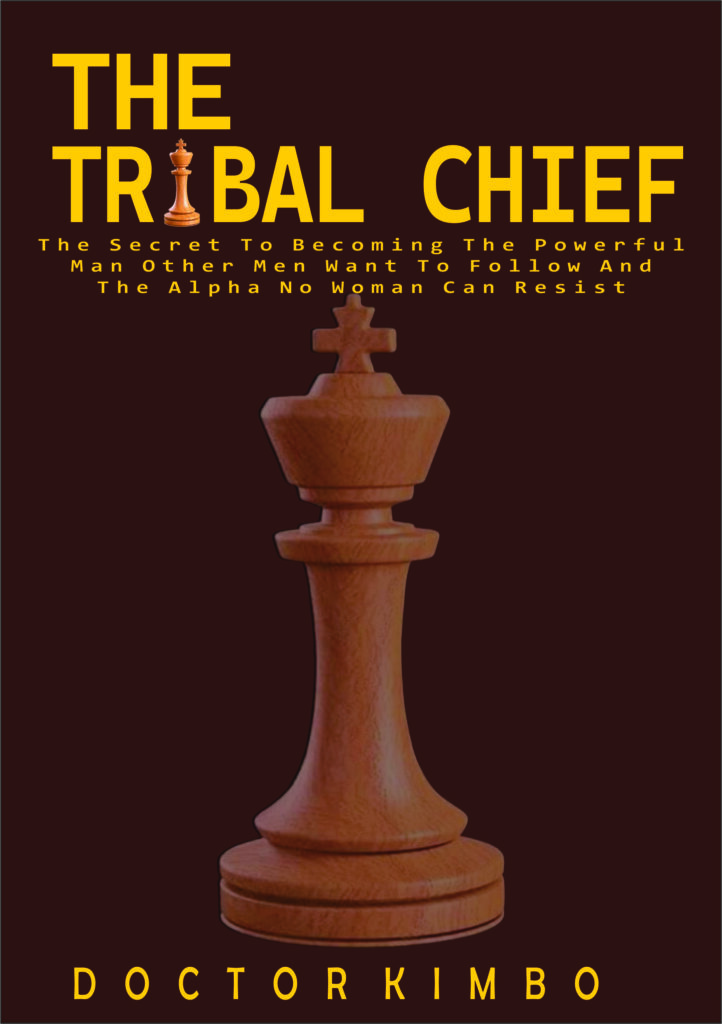
Power is not won in times of peace—it is seized in moments of crisis. Wars, betrayals, economic collapses, and sudden attacks separate leaders from losers, rulers from the ruled. Some men react emotionally when chaos strikes. They panic, freeze, or make desperate, short-sighted decisions. But a Tribal Chief does not operate like ordinary men. He is calm, calculating, and ruthless. He follows a system—a structured approach to decision-making that ensures he not only survives but emerges stronger, richer, and in absolute control.
This system is P.I.O.S.E.E—a method originally designed for pilots handling life-or-death emergencies but now adapted for war, business, and power. PIOSEE allows you to make cold, logical, and strategic moves in high-pressure situations, ensuring that no matter the crisis, you always have the upper hand.
What is PIOSEE?

PIOSEE is a six-phase process that guides elite decision-makers through any crisis with precision and dominance:
- Perceive – Identify and define the problem before reacting.
- Investigate – Gather intelligence; know the facts before acting.
- Outline – List possible options and analyze them for risk and reward.
- Select – Choose the most effective strategy based on logic, not emotion.
- Execute – Take action immediately and decisively—no hesitation.
- Evaluate – Learn, adapt, and prepare for future battles.
With PIOSEE, there is no confusion. No fear. No hesitation. You follow the process, make the right move, and win every crisis.

Phase 1: Perceive – See the Crisis Clearly Before Acting
The first and most critical step in crisis management is perception—accurately identifying what the problem is before making a move.
Weak men react blindly. A Tribal Chief does not.
The Perception Process
When faced with chaos, ask yourself:
What exactly is happening? Define the crisis in one sentence.
How severe is it? Is this a minor setback or a full-blown disaster?
What are the immediate threats? Identify what can destroy you first.
Who is involved? Know your allies, enemies, and neutral players.
By answering these questions, you separate real threats from distractions, ensuring you don’t waste time fighting the wrong battle.
Real-World Crisis Scenarios
Business Scenario: Hostile Takeover Attempt
A competitor suddenly launches a surprise move to acquire controlling shares in your company.
Many CEOs would panic and make emotional decisions.
A Tribal Chief perceives the situation objectively:
Crisis: An external entity is attempting to seize control.
Threat Level: High—losing control means losing everything.
Immediate Threats: Loss of ownership, internal sabotage, shareholder betrayal.
Key Players: Competitor, shareholders, legal teams, board members.
By perceiving the situation accurately, you prevent knee-jerk reactions and start planning countermeasures.
War Scenario: Betrayal from Within
A trusted lieutenant suddenly turns against you, attempting to overthrow your leadership.

Weak rulers respond with blind rage.
A Tribal Chief perceives:
Crisis: Internal betrayal.
Threat Level: Medium—can be crushed if handled correctly.
Immediate Threats: Division among followers, loss of trust.
Key Players: Traitor, loyalists, neutral parties.
Instead of reacting emotionally, you analyze the betrayal—is it personal ambition, external influence, or a coordinated attack?
Understanding the motives lets you strike with precision.
Personal Power Scenario: Financial Collapse
You wake up to find your assets frozen due to a banking crisis or government intervention. A weak man panics.
A Tribal Chief perceives:
Crisis: Financial lockdown.
Threat Level: High—without money, power weakens.
Immediate Threats: Loss of liquidity, inability to move resources.
Key Players: Bankers, government agencies, alternative financial networks.
Instead of wasting time complaining, you immediately start strategizing—offshore accounts, cryptocurrency, or alternative assets. You are always ahead.
Perception is the foundation of power in crisis.
If you fail to see the situation clearly, every action that follows will be flawed.
Before you act, perceive. Before you fight, understand. Before you decide, define.
This is how a Tribal Chief maintains control—even in chaos.

Phase 2: Investigate – Gather Intelligence Before Moving
Once you’ve perceived the crisis, the next step is to investigate—gather all relevant information before making a move.
Weak men react based on assumptions. A Tribal Chief gathers intelligence and acts with precision.
The Investigation Process
Ask yourself:
What are the facts? Strip away emotions, rumors, and distractions.
Who benefits from this crisis? Follow the money, power, and influence.
What are my blind spots? Find hidden dangers before they find you.
Are there unseen forces at play? Many crises are orchestrated, not random.
By investigating thoroughly, you neutralize uncertainty and gain strategic clarity.
Real-World Crisis Scenarios
Business Scenario: Government Crackdown on Your Industry
Your business is suddenly targeted by new regulations that threaten your survival. Most CEOs panic and rush to court.
A Tribal Chief investigates:
What are the facts? Is this a blanket law or a targeted attack?

Who benefits? Competitors, corrupt officials, or foreign interests?
What are my blind spots? Are my operations fully legal, or do I have weak points?
Unseen forces? Was this law lobbied for by a hidden enemy?
With intelligence in hand, you can adapt or counterattack strategically.
War Scenario: Assassination Attempt Fails
Someone tried to eliminate you but failed. A weak ruler would strike blindly.
A Tribal Chief investigates:
Who sent the assassin? An ambitious rival, a foreign power, or an insider?
What was the method? Poison, ambush, explosives—each reveals intent.
Who knew about my movements? Look for the leak in your inner circle.
Was this a warning or an execution attempt? The difference dictates your response.
Once the truth is uncovered, you don’t just defend—you eliminate the threat completely.
Personal Power Scenario: A Woman Publicly Accuses You
A woman from your past suddenly surfaces with false accusations, trying to ruin your reputation. Most men crumble under pressure.
A Tribal Chief investigates:
Who is behind this? An ex-lover seeking revenge, political enemies, or opportunists?
What is her proof? Is there real evidence or just emotional claims?
Who benefits? A competitor, media outlet, or a rival looking to discredit you?
What is the end goal? A lawsuit, public humiliation, or financial extortion?
Instead of reacting emotionally, you uncover the real motives and flip the attack into an opportunity to expose and destroy your enemy.
Investigation is what separates wise rulers from reckless fools.
If you act without intelligence, you make mistakes that could cost you power, wealth, or your life.
A Tribal Chief never moves blindly.
He gathers every piece of information before executing his plan.

Phase 3: Outline – Map Out All Possible Moves Before Striking
Now that you perceive the crisis and have investigated the situation, it’s time to outline your options.
Weak men react impulsively, choosing the first idea that comes to mind.
A Tribal Chief considers every possible move before making a decision.
The Outlining Process
Ask yourself:
What are all my possible responses? List every strategic option.
What are the risks and rewards of each? Some moves gain power, others weaken you.
What resources do I have? Leverage your strengths, allies, and hidden advantages.
How will my enemies react? Every move creates a counter-move—anticipate them.
By outlining multiple strategies, you ensure that you always have control—whether through brute force, deception, or strategic retreat.
Real-World Crisis Scenarios
Business Scenario: A Key Partner Betrays You
You discover that a trusted business partner has been secretly working with your competitors.
Most men would react emotionally and cut ties immediately.

A Tribal Chief outlines options:
- Expose & Destroy: Publicly reveal their betrayal, ruin their reputation.
- Negotiate from Power: Confront them with evidence and extract a better deal.
- Strategic Patience: Pretend not to know, feed them false information, and use them as a spy.
- Leverage the Enemy: Secretly join forces with their new allies and outmaneuver them.
Each option has risks and rewards. Instead of reacting blindly, you select the best course of action.
War Scenario: A More Powerful Rival Declares War
A stronger, more resourceful rival has openly declared war on you.
Most men either submit or attack blindly.
A Tribal Chief outlines:
- Direct Confrontation: Engage in battle, test their strength.
- Divide & Conquer: Isolate their key allies and weaken their power.
- Deception: Pretend to submit while secretly planning a counterattack.
- Strategic Retreat: Buy time to grow stronger, then strike when they least expect.
By considering every option, you ensure you always have the upper hand.
Personal Power Scenario: You Are Caught in a Public Scandal
A damaging story about you goes viral, threatening your reputation. A weak man panics. A Tribal Chief outlines:
- Own the Narrative: Get ahead of the story, control the messaging.
- Go Silent: Let the news cycle burn out without giving it more fuel.
- Attack the Source: Find the origin, expose their motives, and counterattack.
- Redirect Attention: Create a bigger, unrelated story to shift focus.
Instead of reacting like a victim, you choose the best move and turn the crisis into an opportunity.
Powerful men do not rush into battle without a plan.
They see all possible moves before making their decision.
Outlining ensures that you never act from weakness—only from strength.

Phase 4: Select – Choose the Ultimate Strategy for Maximum Power
Now that you’ve outlined all possible moves, it’s time to select the best one.
Weak men hesitate, second-guess, or let emotions guide them.
A Tribal Chief is cold, decisive, and strategic.
The Selection Process
Ask yourself:
Which option gives me the most control? Power is the priority.
Which option has the lowest risk with the highest reward? Efficiency wins wars.
Which option aligns with my long-term goals? Avoid short-term victories that weaken you later.
What’s the second-best option if my first move fails? Always have a backup plan.
By choosing wisely, not emotionally, you position yourself for absolute dominance.
Real-World Crisis Scenarios
Business Scenario: Market Disruption Threatens Your Industry
A new technology or competitor is threatening to make your business obsolete.
Many CEOs panic or resist change.
A Tribal Chief selects a move that ensures he wins regardless of the shift.
Options Outlined: Fight the change, adapt, buy out the disruptor, or innovate faster.
Selection: Buying out the disruptor and integrating their innovation into your empire.
Outcome: You don’t fight the future—you own it.
War Scenario: A Rival Faction is Gaining Strength
A competing faction is rapidly growing in power and may soon challenge you.
The weak wait until it’s too late.
A Tribal Chief selects the best strategy before the enemy becomes a true threat.
Options Outlined: Assassinate their leader, absorb them into your system, create internal conflict among them, or launch a preemptive strike.

Selection: Create internal division so they self-destruct without you lifting a finger.
Outcome: You eliminate a threat without exposing yourself.
Personal Power Scenario: You Are Challenged in Public
A rival publicly disrespects you, testing your dominance.
The average man reacts emotionally, escalating the conflict in a way that weakens him.
A Tribal Chief selects the response that crushes the opponent while elevating his own status.
Options Outlined: Ignore, destroy him verbally, set a trap for later, or provoke him into self-destruction.
Selection: You expose his weaknesses with a calculated response that makes him look foolish.
Outcome: Your reputation rises while he is humiliated.
Selecting the right move is what separates ruthless leaders from reckless fools.
Every option has consequences—a Tribal Chief picks the move that solidifies his power and eliminates threats without unnecessary risk.
Now comes the Execution Phase—taking action with full force.
Phase 5: Execute – Strike with Precision and Ruthless Efficiency
Now that you’ve selected the best strategy, it’s time to execute.

Many men fail here. They hesitate, act half-heartedly, or let emotions weaken their moves.
A Tribal Chief strikes with full force, no hesitation, no second-guessing.
The Execution Process
Ask yourself:
Is my plan airtight? No loose ends, no unnecessary risks.
Do I have all the resources needed? Ensure money, allies, and tools are in place.
Can I execute with overwhelming force? If you must strike, strike hard enough that no counterattack is possible.
What’s my exit strategy? Always have a way out if things shift unexpectedly.
Once all is in place, you move with total commitment—no fear, no doubts.
Real-World Crisis Scenarios
Business Scenario: Crushing a Competitor
A rival company is trying to take your market share.
You’ve investigated, outlined options, and selected an aggressive acquisition strategy.
Now, you execute:
You buy out their key suppliers, choking their production.
You launch a strategic marketing blitz that steals their customers.
You poach their top talent, leaving them weak and leaderless.
You absorb what’s left or force them into irrelevance.
Outcome: You don’t just beat them—you erase them from the battlefield.
War Scenario: Eliminating a Threat
A dangerous enemy has been identified. You’ve planned the perfect ambush.
Now, you execute:
Your attack is swift, giving no room for counteraction.
Every key enemy leader is neutralized at the same time.
You use deception to make it seem like an accident or an internal betrayal.
You immediately install a new leadership structure that is loyal to you.
Outcome: Your enemy vanishes overnight. No loose ends, no survivors to seek revenge.
Personal Power Scenario: Seizing an Opportunity
A rare chance to elevate your status appears—a high-value alliance, a lucrative deal, or a powerful connection.
Weak men hesitate.

A Tribal Chief executes immediately:
You lock in the deal before anyone else even notices the opportunity.
You leverage the new alliance to expand your influence.
You secure additional power moves before competitors can react.
Outcome: You don’t wait for permission—you claim what is yours before anyone else moves.
Execution is where power is won or lost. Most men hesitate and let opportunities slip away.
A Tribal Chief moves with precision, overwhelming force, and ruthless efficiency.
No half-measures, no second chances.
Phase 6: Evaluate – Analyze, Adapt, and Strengthen for the Next Battle
Execution is complete.
The move has been made.

But a Tribal Chief is never satisfied with just winning—he must analyze the outcome, learn from it, and refine his strategies for future dominance.
Weak men act and forget.
A true leader studies every move, sharpening his instincts for the next war.
The Evaluation Process
Ask yourself:
Did the move achieve its intended goal?
Power, dominance, and control are the only measures of success.
What worked perfectly? Identify what should be repeated and refined.
What could have been done better?
No strategy is flawless—find the weaknesses and fortify them.
What unexpected variables emerged?
The battlefield is unpredictable—anticipate better next time.
What new opportunities arose from this move? Power is never static—one success should create more.
By evaluating each move, you ensure that every victory makes you stronger and every setback teaches you a new way to win.
Real-World Crisis Scenarios
Business Scenario: Expanding into a New Market
You’ve launched a major expansion into a new region. Now, you evaluate:
Sales numbers show the move was profitable, but not optimized.
Your marketing strategy worked, but the supply chain had weaknesses.
A new competitor emerged that you didn’t anticipate.
Some alliances proved stronger than expected—leverage them further.
Outcome: The next expansion will be even more ruthless, efficient, and profitable.
War Scenario: Defeating a Rival
A dangerous competitor was eliminated. Now, you analyze:
The enemy fell, but some loyalists remain—neutralize them.
Your deception worked, but next time, a more subtle approach could be better.
A new power vacuum has formed—should you step in or let another rival take the risk?

Outcome: You use the evaluation to refine your war tactics, ensuring the next battle is even more effortless.
Personal Power Scenario: Gaining Influence
You successfully positioned yourself in a powerful network. Now, you assess:
Your connections are strong, but who are the real power players?
Some allies are useful, but others are liabilities—time to cut the weak links.
Your reputation has grown—how do you capitalize on it before the momentum fades?
Outcome: You fine-tune your alliances, purge weaknesses, and set up even greater power moves.
A Tribal Chief never stops sharpening his weapons.
Every move, win or lose, must be dissected, learned from, and improved.
Evaluation is what makes a great strategist unbeatable.
With PIOSEE, you now have a ruthless decision-making framework for handling business, war, and personal power struggles.
Crisis is inevitable—weak men crumble, but a Tribal Chief dominates, adapts, and rises stronger every time.
Becoming a Ruthless and Effective Problem Solver
A Tribal Chief doesn’t complain about problems—he solves them swiftly, efficiently, and permanently.
Most men are reactive, emotional, or hesitant when faced with obstacles.
You must train yourself to be calm, strategic, and decisive.
Here are key tips to becoming an elite problem solver:
- Remove Emotion – Focus Only on Solutions
Weak men let emotions cloud their judgment.

A Tribal Chief remains cold and calculating.
✅ Detach emotionally—Problems are puzzles, not personal attacks.
✅ Don’t waste time complaining—It changes nothing.
✅ Focus only on what you can control—Ignore everything else.
Example: If your business is failing, crying about the economy is useless. Instead, cut losses, pivot, and dominate a new angle.
- Define the Real Problem – Attack the Root Cause
Most men solve symptoms, not root causes.
A Tribal Chief digs deep and eliminates the core issue.
✅ Ask ‘Why?’ multiple times—The first problem is rarely the real one.
✅ Look at the long-term impact—A temporary fix is a waste of time.
✅ Destroy the source of the problem—Not just the visible effects.
Example: If employees are underperforming, don’t just yell.
Find out if it’s poor leadership, weak incentives, or a lack of clear goals—then fix it.
- Use PIOSEE – A Systematic Approach
Always solve problems methodically, not emotionally.
🔹 Perceive – Gather all information before reacting.
🔹 Identify – Pinpoint the real issue, not just symptoms.
🔹 Options – List all possible solutions, no matter how extreme.
🔹 Select – Choose the option that gives the most power and efficiency.
🔹 Execute – Take action with ruthless precision.
🔹 Evaluate – Learn from the outcome to refine future decisions.
This ensures you don’t make impulsive, weak, or short-sighted moves.
- Think in Terms of Power – Every Problem is an Opportunity
A Tribal Chief doesn’t see problems as obstacles—he sees them as chances to gain power.
✅ Ask: “How can I turn this problem into an advantage?”
✅ Look for hidden opportunities in chaos.
✅ Use problems to test and strengthen your strategy.
Example: A competitor is trying to steal your customers?
Use this as an excuse to upgrade your brand, destroy them in the market, and come out stronger.

- Act Quickly – Weakness Comes from Indecision
Most men hesitate, overthink, and let problems grow bigger. A Tribal Chief moves fast.
✅ Speed is power—decide fast, act even faster.
✅ Small, quick actions are better than waiting for perfection.
✅ Don’t delay—problems don’t solve themselves.
Example: A major deal is slipping away? Act immediately—negotiate, adjust, or pivot before your enemy claims it.
- Control the Narrative – Frame the Problem in Your Favor
How you define the problem determines how others react to it.
✅ Frame it as a challenge, not a failure.
✅ Direct people’s perception to suit your strategy.
✅ Use language that reinforces control and confidence.
Example: If your company loses money one quarter, don’t say “We’re struggling.” Say “We’re restructuring for aggressive expansion.”
- Have a Backup Plan – Always Stay Ahead
The best problem solvers prepare for failure before it happens.
✅ Always have a ‘Plan B’ and ‘Plan C.’
✅ Never assume things will go smoothly—anticipate obstacles.
✅ If a move fails, pivot instantly—never freeze.
Example: A new product launch flops? Instead of panicking, immediately shift resources to a backup strategy and turn the failure into a win.
Weak men fear problems. A Tribal Chief dominates them.
The world is a battlefield—your ability to solve problems defines your success.
Train your mind to be cold, efficient, and ruthless in your approach.
Every challenge is a test—solve it better than anyone else, and you rise to the top.


